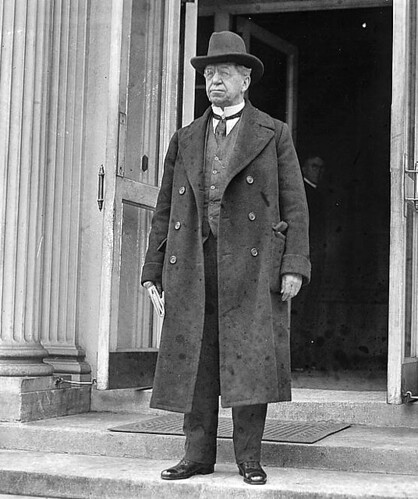In 1899, General Jacob S. Coxey rolled into Joplin to try his luck in the mines. General Coxey was not a hero of the Civil War; instead, he was a hero of the working class who twice led a rabble of unemployed workers dubbed “Coxey’s Army” on quixotic marches on Washington, D.C.
Coxey, a native of Pennsylvania, who despite his status as a prosperous businessman, believed that business monopolies brutally crushed the common man. One year after the nation descended into financial panic during the economic crisis of 1893, Coxey led a ragtag group of unemployed workers to Washington, D.C. to protest unemployment and to ask the federal government to create public works projects to provide jobs for the unemployed. His plan anticipated the economic recovery programs of Franklin Roosevelt’s administration, such as the Works Progress Administration (WPA) and the Civilian Conservation Corps (CCC). Although unsuccessful, Coxey and his followers captured the country’s attention. He would later launch a second march in 1914 that also failed to achieve lasting results.
In between marches Coxey continued his successful business pursuits, but remained open to new ventures. The year 1899 found Coxey in Joplin, Missouri. He brought with him a sixty foot long railroad car that had once been outfitted for traveling in luxury, including his personal office on wheels, but had since been converted into a car that carried machinery. On board was a boiler and engine, mining timbers, mine cars, and other equipment brought from an Ohio coal mine.
Coxey announced his intent to mine according to his style, but the Joplin Daily News remarked, “what use he has for a dozen coal cars experienced miners here cannot explain.” Coxey’s mine was made up of two lots on the Shoal Creek Company’s lease located at Redding’s Mill south of Joplin. Coxey’s railroad car and its contents attracted “unusual attention” among onlookers at the Frisco Depot.
One week after his arrival Coxey departed Joplin to return home to Massillon, Ohio, and announced his intent to return in the following weeks to check on his mining operations. He was described as a “business like man and has plenty of ready cash” who “merely smiles and says but little when politics is broached. He is a good storyteller and never fails to tell jokes on himself.” In looks he was a “plain business appearing man, middle aged and wears the latest style tailor made clothes and tan shoes.”
While in Joplin, he reportedly became good friends with Thomas Connor, who would later build the New Joplin/Connor Hotel, and expressed his interest in “the story of Mr. Connor’s success.”
It is unknown just how much money Coxey made from his mines, but he certainly livened up Joplin for at least one week in 1899.
Source: Joplin Daily News, Library of Congress

